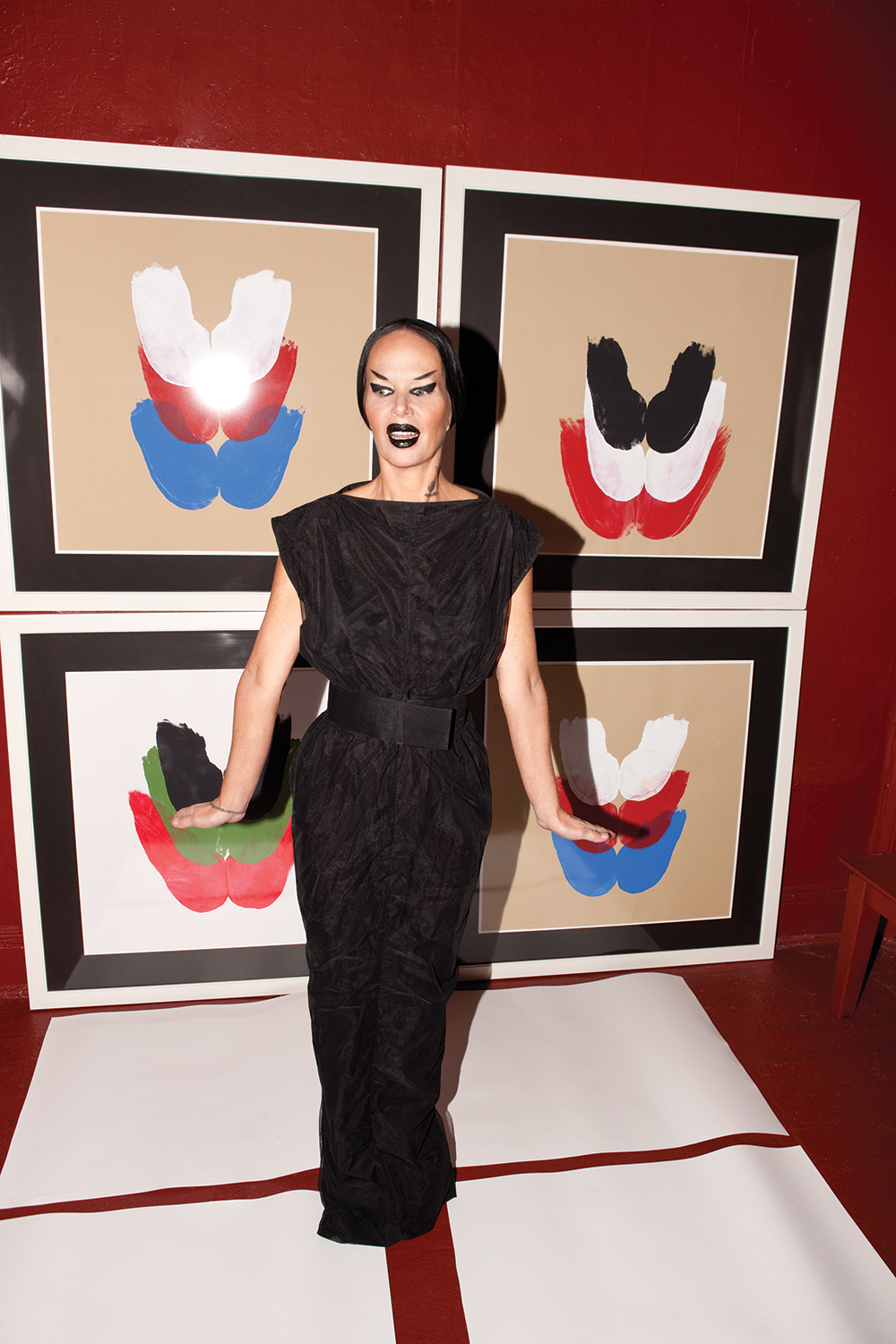On Drawing
I feel like a drawing practice is sort of a softer, easier-to-share version of The Voluptuous Horror of Karen Black and the live work. It’s a meditative process, it’s a decorative process. And I draw all of the images not to make souvenirs, but to sketch out the performance, it’s a way of excavating and going deeper with the performances. It’s also a way of sharing the performances with people, as performance is a very ephemeral act. Working on paper is such an old-timey practice, it’s really quaint. I’ve been doing it a long time, and my drawings got to be in a really nice drawing collection at the Museum of Modern Art.
On Criticism
It is a sensitive process, it’s fragile. People’s meanness feels like murder. I feel like I’m being stabbed in the eyeballs when people totally misinterpret my work, or say hateful things about my art. It’s like being stabbed in your calves with big knives. Of course we train ourselves to become impenetrable to criticism, but at any rate, it’s all part of the same machine, and the same beast, and my job is simply to remain as healthy as possible, to show up for the artwork. I’m not always able to do that, but I try.
On Her Home [pictured throughout], the Color Red, and Anger
It’s not really something that is calculated. I’m a minimalist, I’m not a collector. I don’t have any dust in the house, I usually have under ten books that I cover all in black or white, so you can’t see the covers, because I like the palette of the walls to be very simple. I feel like a state of minimalism is a great incubator for new ideas. I have a bed that just gets pulled in and out, because I need to shoot things in my apartment, like films, and photos. I can’t stand towels for some reason. I think it comes from being a surfer, I don’t need a towel. Or plates. I have a towel, plate, and dish phobia. I just grab a smoothie, I’m not domestic in the house.
I sit around thinking what I could do without. I challenge myself to see what else could I make red. It’s very soothing to me, it’s kind of womblike, red. It’s not blood, and it’s not re engine red. Essentially it’s very turn-of-the-century Lower East Side, it’s the color of the bricks. So it’s kind of indigenous to the Lower East Side, to surround yourself with that brick tone. In classical Chinese opera, all the colors are signifiers for emotions in the masks, and red is definitely anger. There’s a Thor song called Anger Is My Middle Name, I’m just laughing thinking about that song, it’s a great song. I feel like I’m very angry. I’m a friend to my anger though, and being angry points me in a direction to do new stuff.
